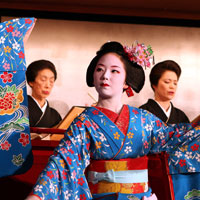
From chopstick faux pas to respectful forms of greeting, here are the top things you need to know (and avoid) on your next trip to Japan.
Customs
1. In the United States, being direct, efficient, and succinct are highly valued traits. In Japan this style is often frowned upon.
2. Make sure you don’t express anger or aggression. These traits are equated with losing face in Japan, something you do not want to happen. Also stick to neutral subjects in conversations; private lives are kept private.
3. Most Japanese do not use first names casually, so use last names with the honorific –san after the name in social situations.
4. There is no “fashionably late” in Japan, so be on time. Eating in public and overt physical affection is also frowned on by older Japanese.
Greetings
5. Japanese of all ages and backgrounds bow in greeting each other (even on the telephone!), and foreign visitors who at least bob the head will get a smile of recognition. However, Japanese know all about handshaking as well, and the visitor’s head may crash with an outstretched hand.
Recommended Fodor’s Video
Sightseeing
6. There’s no strict dress code for visiting temples and shrines, but you will feel out of place in shorts or outfits with modest skin coverage. Casual clothes, including jeans, are fine for sightseeing. Remember to remove your shoes when entering temples. There are usually slippers by the entrance for you to change into.
Out on the Town
7. Men are expected to wear a jacket and tie at more expensive restaurants and nightclubs. Women should wear a dress or skirt. If you’ve been invited out to dinner, either in a private home or restaurant, it’s customary to bring a small token for your host. If you are in a home, remember to remove your shoes and put on the slippers that are usually waiting for you.
8. When eating, it’s okay to ask for a fork if you’re not comfortable with chopsticks. If you do use chopsticks, do not use the end of the chopstick that has been in your mouth to pick up food from communal dishes. And never leave your chopsticks sticking straight up in your food. This is a big no-no. Rest them on the edge of your bowl or plate instead.
9. Drinking is something of a national pastime in Japan. If you’re not up to the task, never refuse a drink (it’s considered very rude). Instead, sip away, making sure your glass is half full.
10. Whatever you do, do not pour your own glass. Companions traditionally pour drinks for each other and pouring your own is pointing out that your companions are not attentive. In the same vein, if you see an empty glass, fill it.
Doing Business
11. Make sure you allow adequate time for travel—being late for a business function is not appreciated.
12. Wear conservative-color clothing and bring along meishi (business cards). Meishi are mandatory in Japan, and it is expected that when you bow upon meeting people you will also hand them a card, presented using both hands; only English is okay, but if you have one side in Japanese and one in English, your business associates will be very impressed.
13. Remember to use last names with the honorific –san when addressing people. Also, hierarchy matters to the Japanese, so make sure your job title and/or rank is indicated on your card.
14. You may see your associates putting the cards on the table in front of them. This is so they can remember your name easily. Follow suit; never shove the cards you have just received in your pocket or bag.
15. It’s not customary for Japanese business people to bring their spouses along to dinners, so never assume it’s okay to bring yours. If you want to bring your spouse along, ask in a way that eliminates a direct refusal.
Photo courtesy Jay_Sottolano, Fodors.com member.


